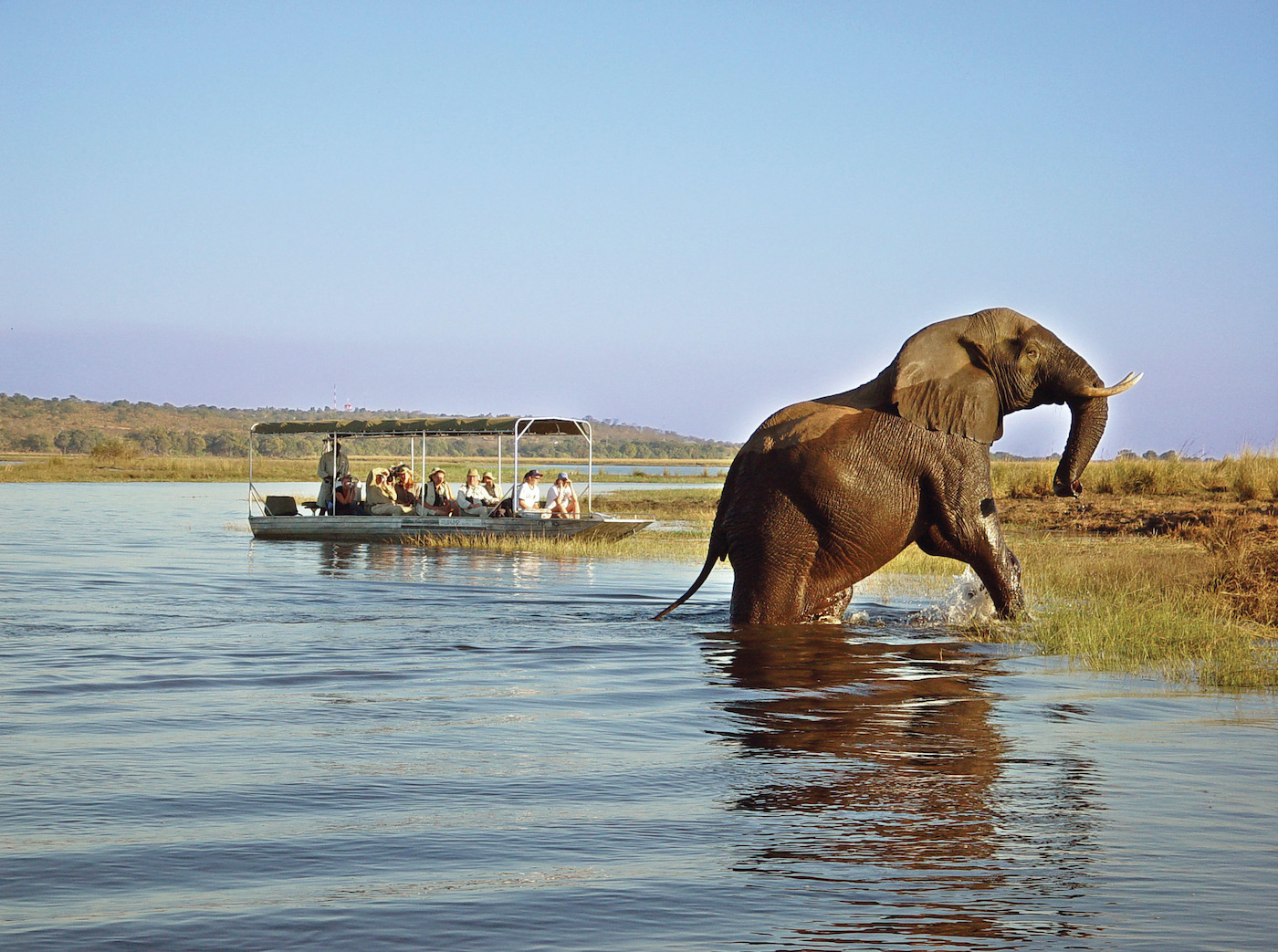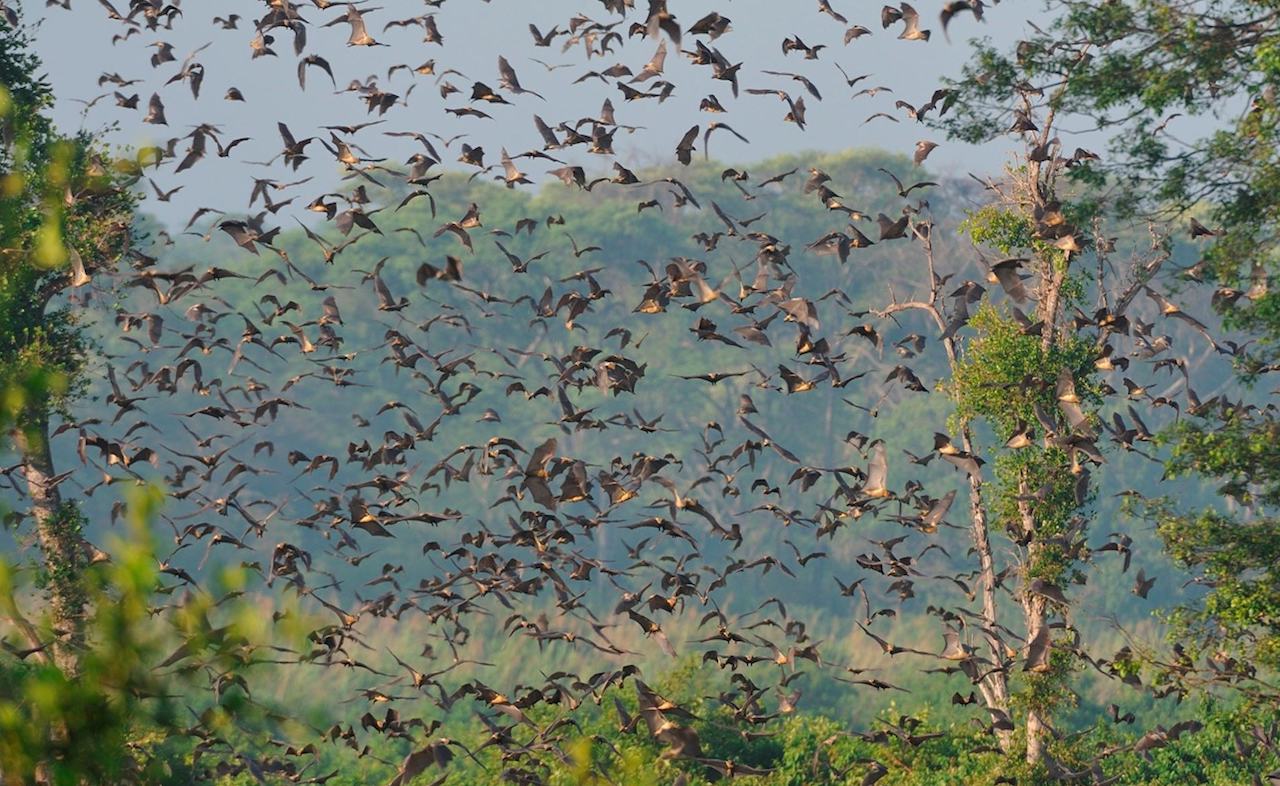Nestled in the heart of Africa, where the vast expanse of untamed wilderness meets the rhythmic flow of mighty rivers, Zambia stands as a testament to the raw and unbridled beauty of the continent. The very essence of the “Real Africa” comes to life in the myriad national parks that span this enchanting country, creating an unparalleled haven for wildlife enthusiasts, intrepid travelers, and those seeking a genuine connection with nature. In this expansive guide, we invite you to join us on an immersive journey through the diverse landscapes and extraordinary biodiversity of Zambia’s national parks—a journey that unveils the soul-stirring tales written by the untamed residents of these pristine habitats.
As the sun paints the sky in hues of orange and pink, casting a golden glow over the sprawling savannas and dense woodlands, Zambia emerges as a land of contrasts and harmonies. It is a nation where the mighty Zambezi River weaves its way through the landscape, creating fertile valleys and awe-inspiring gorges, while vast plains and rugged escarpments provide a backdrop to one of Africa’s most diverse ecosystems. At the heart of this natural wonderland lies a collection of national parks, each a chapter in Zambia’s story of conservation, preservation, and the coexistence of humans and wildlife. Below are the most frequented national parks during our private escorted Zambia safari tours, as well as the Fly in Game Packages, Luxury Zambia Safaris.
South Luangwa National Park
 Our journey commences in the eastern realms of Zambia, where South Luangwa National Park, often regarded as one of Africa’s finest wildlife sanctuaries, unfolds its wonders. Covering over 9,000 square kilometers, this park is a haven for biodiversity, encompassing the Luangwa River and an ecosystem that ranges from dense woodlands to expansive grassy plains. Here, the phrase “walking safari” takes on a whole new meaning as visitors traverse the landscape on foot, forging a deep connection with the environment and its inhabitants. Elephants amble through the woodlands, lions prowl in search of their next meal, and the elusive leopard reveals itself in the golden light of dusk—a spectacle that embodies the untamed spirit of South Luangwa.
Our journey commences in the eastern realms of Zambia, where South Luangwa National Park, often regarded as one of Africa’s finest wildlife sanctuaries, unfolds its wonders. Covering over 9,000 square kilometers, this park is a haven for biodiversity, encompassing the Luangwa River and an ecosystem that ranges from dense woodlands to expansive grassy plains. Here, the phrase “walking safari” takes on a whole new meaning as visitors traverse the landscape on foot, forging a deep connection with the environment and its inhabitants. Elephants amble through the woodlands, lions prowl in search of their next meal, and the elusive leopard reveals itself in the golden light of dusk—a spectacle that embodies the untamed spirit of South Luangwa.
One of the best-selling tours to this park is our 4 Days Zambia Safari in SouthLuangwa National Park, which can be booked on any date as a private tour.
Lower Zambezi National Park
Venturing further south, our exploration leads us to the Lower Zambezi National Park, a gem nestled along the banks of the iconic Zambezi River. This park, characterized by a mosaic of floodplains, escarpments, and riverine forests, beckons travelers to a symphony of natural beauty. Canoe safaris provide a unique perspective, allowing enthusiasts to navigate the waterways where hippos laze and crocodiles lurk beneath the surface. Against the backdrop of the Zambezi, buffalo herds graze, lions survey their territories, and the call of fish eagles echoes through the air—an orchestra of life playing out in harmony with the river’s gentle flow.
Kafue National Park
Our journey now takes us westward, where Kafue National Park unfolds as one of Africa’s largest and most diverse protected areas. Spanning an astonishing 22,400 square kilometers, Kafue is a testament to the sheer scale of Zambia’s commitment to conservation. Within its boundaries, miombo woodlands give way to the famed Busanga Plains, a seasonal floodplain that transforms into a haven for wildlife during the rainy season. Here, vast herds of antelope graze alongside predators, creating a dynamic and captivating spectacle. Kafue is not merely a park; it’s a living, breathing testament to the resilience and interconnectedness of the natural world.
Liuwa Plain National Park
Journeying to the western reaches of Zambia, we arrive at Liuwa Plain National Park, a landscape that stretches as far as the eye can see. Here, the grasslands seem to extend to infinity, providing the canvas for one of Africa’s most intriguing wildlife phenomena—the second-largest wildebeest migration on the continent. As the wildebeest traverse the plains, accompanied by zebras and other herbivores, Liuwa Plain transforms into a living, breathing portrait of the untamed. Remote and untouched, this park offers a unique safari experience, where the vastness of the landscape is matched only by the solitude that envelops it.
North Luangwa National Park
Our journey concludes in the northern realms of Zambia, where North Luangwa National Park stands as a testament to the power of conservation and the resilience of nature. Famed for its walking safaris, this park provides a rare opportunity to traverse the rugged terrain on foot, allowing visitors to become part of the environment rather than mere observers. Buffalo herds roam freely, prides of lions establish their territories, and the elusive leopard makes its presence known in the underbrush—a journey into the heart of Africa’s wilderness that leaves an indelible mark on the soul.
Mosi-oa-Tunya National Park
While not strictly a traditional wildlife haven, our journey would be incomplete without a visit to Mosi-oa-Tunya National Park, where the reverberating roar of Victoria Falls captures the very essence of the Zambezi River’s power. A UNESCO World Heritage Site, this park offers not only the visual spectacle of the falls but also a mosaic of ecosystems where elephants, hippos, and diverse birdlife coexist in harmony. The Zambezi River, as it approaches the precipice of the falls, is a force of nature that symbolizes the untamed spirit of Zambia itself.
Blue Lagoon National Park
Completing our exploration, we turn our attention to Blue Lagoon National Park, situated along the Kafue River in northern Zambia. This park, with its riverine landscapes, provides a serene and picturesque setting. Boat safaris along the Kafue River offer a unique perspective on the park’s diverse wildlife, including hippos, crocodiles, and a myriad of bird species. In this lesser-known gem, the rhythm of the river dictates the pace, inviting visitors to unwind and embrace the tranquility of this hidden oasis.
In their individual pages, we will delve deeper into each of these national parks, uncovering the intricacies of their ecosystems, the stories of the creatures that call them home, and the commitment of Zambia to the preservation of its natural heritage. So, fasten your seatbelts, for the adventure of a lifetime awaits as we traverse the unexplored landscapes and unveil the secrets of Zambia’s national parks—a symphony of nature that resonates with the heartbeat of the wild.
Less frequented Zambia National Parks – The ‘off the beaten track ‘
In addition to the well-known national parks mentioned earlier, Zambia is home to several lesser-known but equally captivating parks and reserves. These hidden gems provide unique and off-the-beaten-path experiences for those seeking a more intimate connection with nature. Let’s explore some of these lesser-known destinations:
Lavushi Manda National Park
Location: Northern Zambia
Nestled in the northern reaches of Zambia, Lavushi Manda National Park remains a well-kept secret. Characterized by miombo woodlands, grassy plains, and the meandering Luangwa River, this park offers a tranquil and remote safari experience. Visitors can explore the diverse landscapes on foot, encountering an array of wildlife, including elephants, antelope, and a variety of bird species. The park’s pristine environment and limited tourism make it a hidden paradise for nature lovers.
Nsumbu National Park
Location: Northern Zambia (Lake Tanganyika shoreline)
Stretching along the shores of Lake Tanganyika, Nsumbu National Park is a hidden jewel with a unique blend of terrestrial and aquatic ecosystems. The park encompasses lush woodlands, grassy plains, and pristine beaches along the lake. Visitors can explore the underwater world through snorkeling or enjoy game drives to spot elephants, hippos, and a rich birdlife. The secluded ambiance and the park’s commitment to conservation contribute to a serene and untouched experience.
Kasanka National Park

Location: Central Zambia
Kasanka National Park may be small in size, but it hosts one of Africa’s most captivating wildlife spectacles—the annual bat migration. Millions of fruit bats converge on the park’s swampy woodland areas, creating a mesmerizing display. Beyond the bats, Kasanka is home to diverse bird species, including wattled cranes, and offers opportunities for walking safaris and boat trips along the rivers. The park’s unique features make it a hidden gem for wildlife enthusiasts.
Sioma Ngwezi National Park
Location: Western Zambia (Barotse Floodplain)
Overview: Sioma Ngwezi National Park is situated in the remote reaches of western Zambia, encompassing the Barotse Floodplain. The park showcases a mosaic of landscapes, from woodlands to wetlands, and is a haven for birdwatchers, with numerous waterbirds inhabiting the floodplain. Visitors can explore the park’s diverse ecosystems, witness traditional Lozi fishing techniques, and encounter wildlife such as elephants, buffalo, and antelope.
North-Western Kafue National Park:
Location: Northwestern Zambia
Often overshadowed by its larger counterpart, North-Western Kafue National Park is a hidden treasure awaiting discovery. This section of Kafue offers a more secluded safari experience, with diverse habitats ranging from woodlands to floodplains. The Busanga Plains extend into this area, attracting large herds of herbivores and their predators. With fewer visitors, North-Western Kafue provides a peaceful escape into the heart of Zambia’s wilderness.
West Lunga National Park:
Location: Northwestern Zambia
West Lunga National Park remains one of Zambia’s least-explored areas, offering a pristine and untouched wilderness experience. The park is characterized by miombo woodlands, rivers, and grassy plains. Visitors can embark on walking safaris to encounter a variety of wildlife, including elephants, leopards, and endemic bird species. West Lunga’s remoteness and limited infrastructure contribute to its untouched charm.
These lesser-known national parks and reserves exemplify Zambia’s commitment to preserving its natural heritage while offering adventurous travelers the opportunity to explore hidden corners of the country, away from the crowds. Each of these destinations contributes to the diverse and rich tapestry that defines Zambia’s status as a top-tier safari destination.
